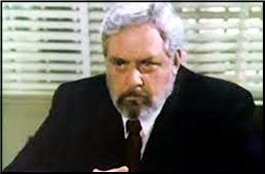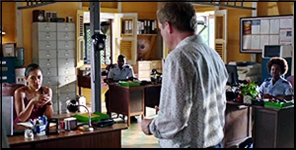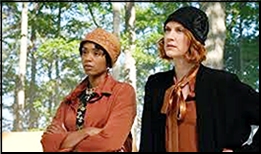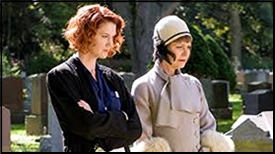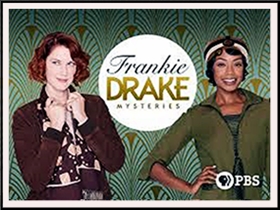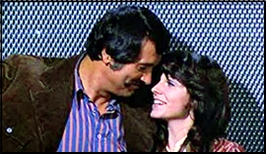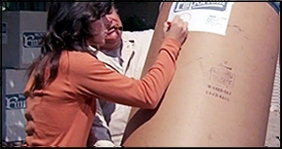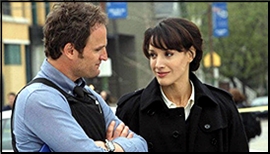Fri 14 Aug 2020
A PI TV Episode Review: EYES “Pilot†(2005).
Posted by Steve under Reviews , TV mysteries[4] Comments
EYES “Pilot.†ABC / Warner Brothers. 30 March 2005 (Season 1, Episode 1.) Tim Daly (Harlan Judd), Garcelle Beauvais, A. J. Langer, Laura Leighton, Eric Mabius, Rick Worthy, Natalie Zea. Creator: John McNamara. Director: Jon Amiel.

Harlan Judd (Tim Daly) is the head of a huge private detective agency, Judd Risk Management, with many operatives and many cases going on at one time. Their offices are in a large multi-story building, mostly open to the roof, with people at their desks or walking around doing busy things at any one time. There is one big problem. They’re barely breaking even, and rumors have it that someone is trying to do a leveraged buyout.
There is also one big solution. Daly is hired by one businessman to get the money back, amount in the millions, embezzled by another, a former associate. The problem is, the embezzler admits he has the money, but that he also has the goods on the man he embezzled it from.
There are several other smaller cases worked on in this first episode, which I won’t go into, but I will mention that there are also several non-work related relationships between some of the employees that are stating to interfere with their work. And I haven’t yet told you that there is a mole in the firm, someone telling tales out of hand to whoever it is that may or may not be trying to buy them out.
This is the high glitzy end of the PI business, and I’m not sure if there is anything like it in book form. Tim Daly is perfect in the role of the brash, perhaps way too brash, head of the firm, but he has good people working for him. Some, however, as mentioned above, not so good.
This was the first of what was intended to be twelve episodes, but only five were aired before ABC pulled the plug. Based on only the first episode, I’m not in a position to tell you what went wrong. Was glitzy not in style in 2005, or did viewers not particularly care for glitz and internal intrigue in the PI business? In any case, all twelve episodes were filmed and the entire series has been telecast in various parts of the world. Just not in the US.
